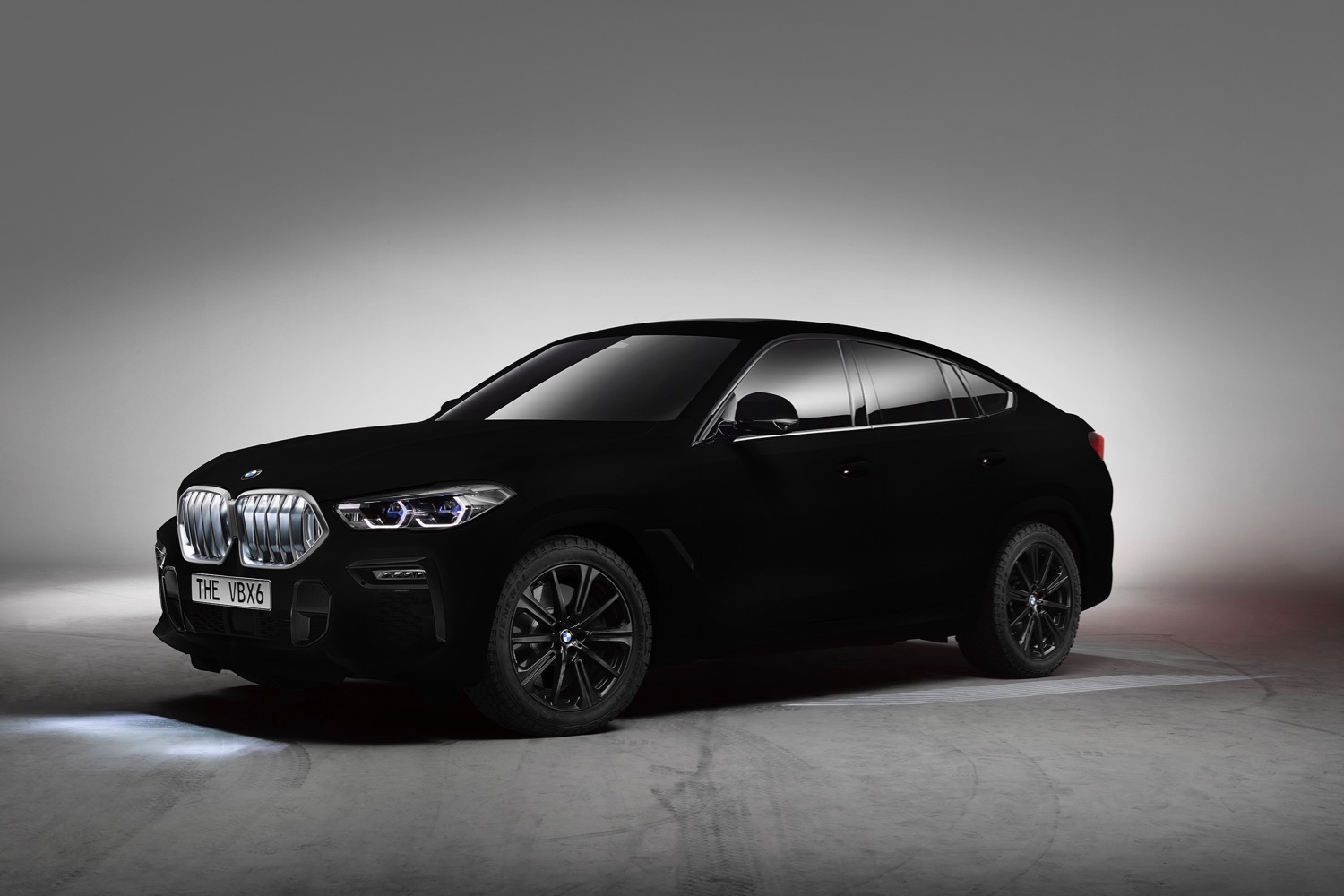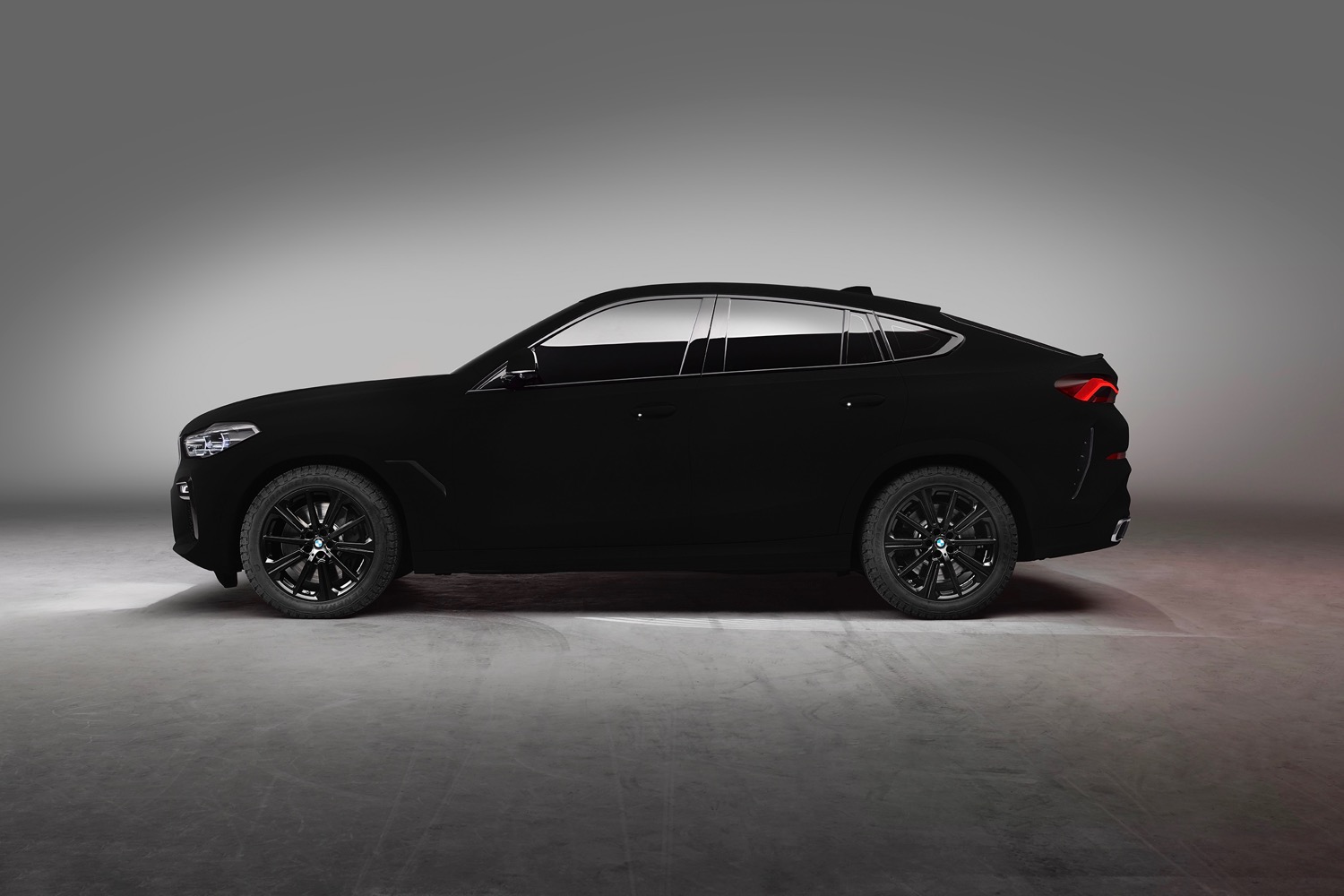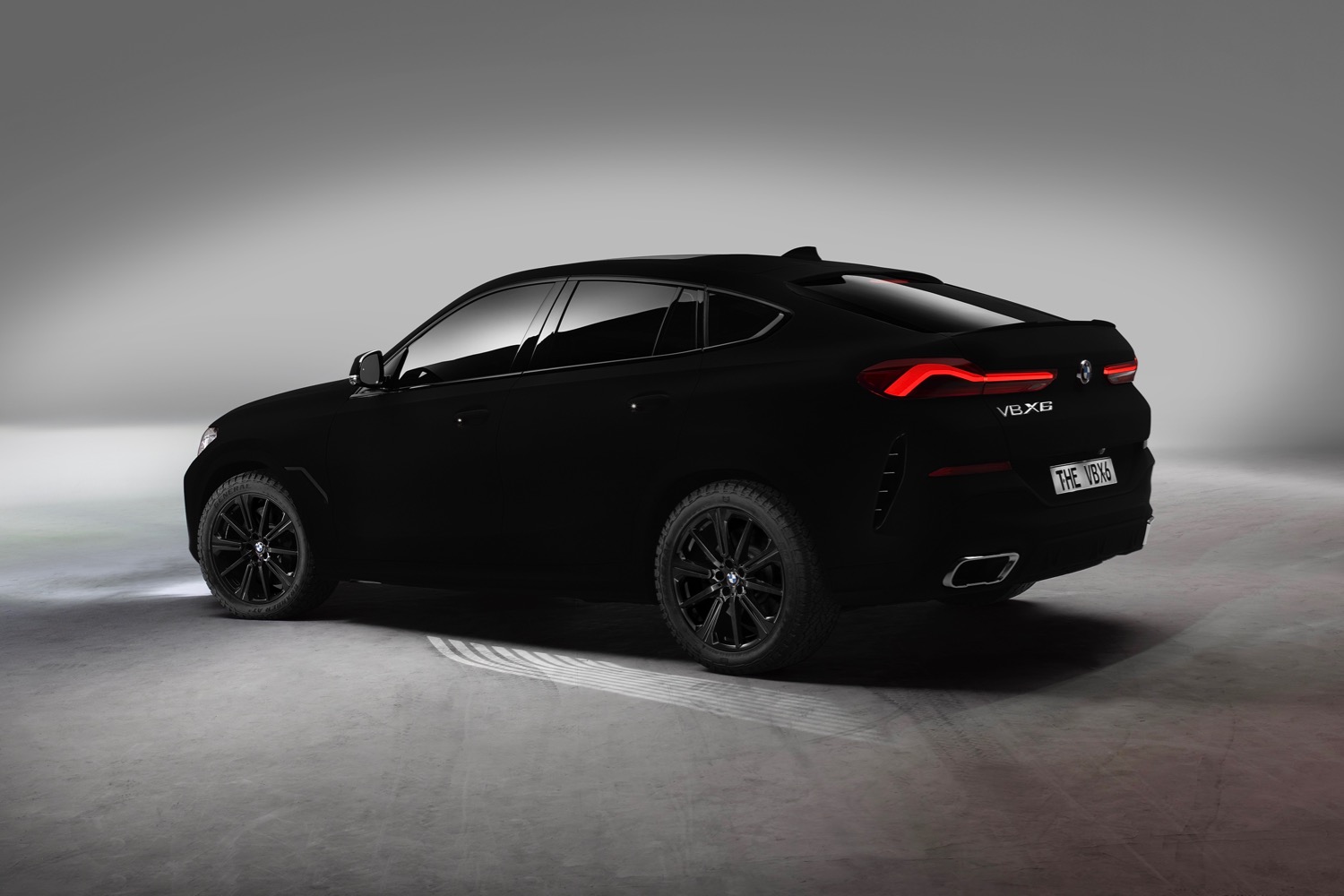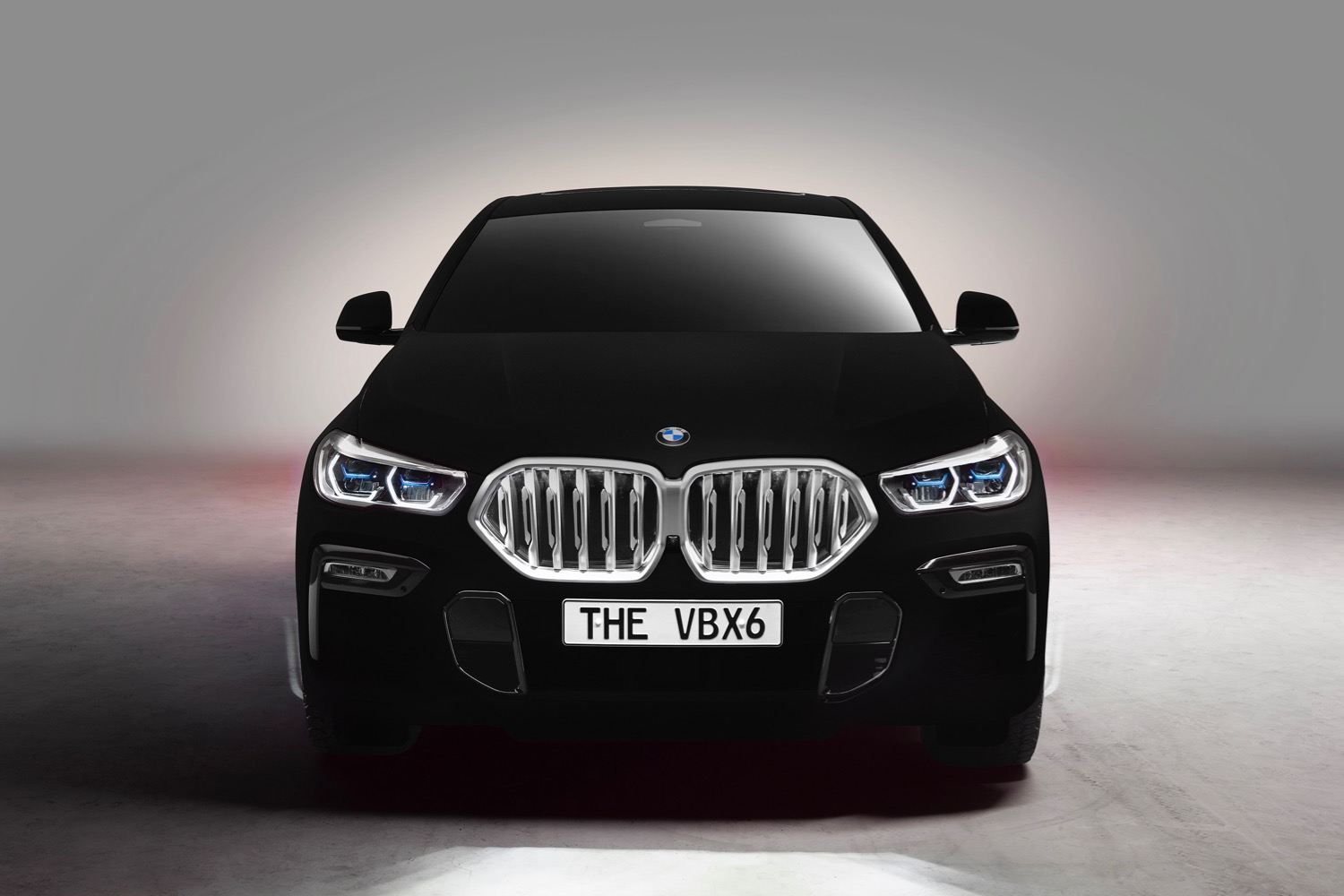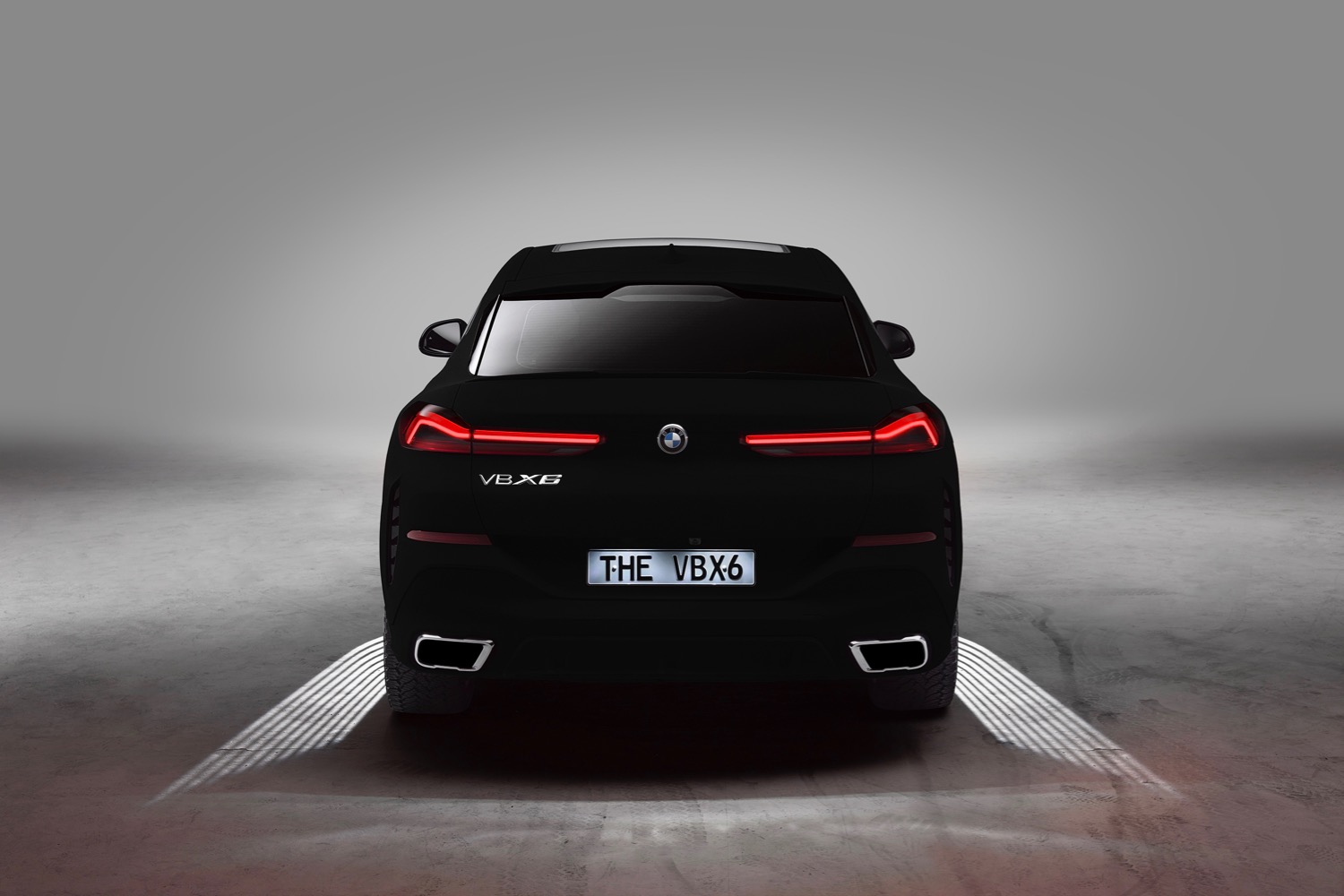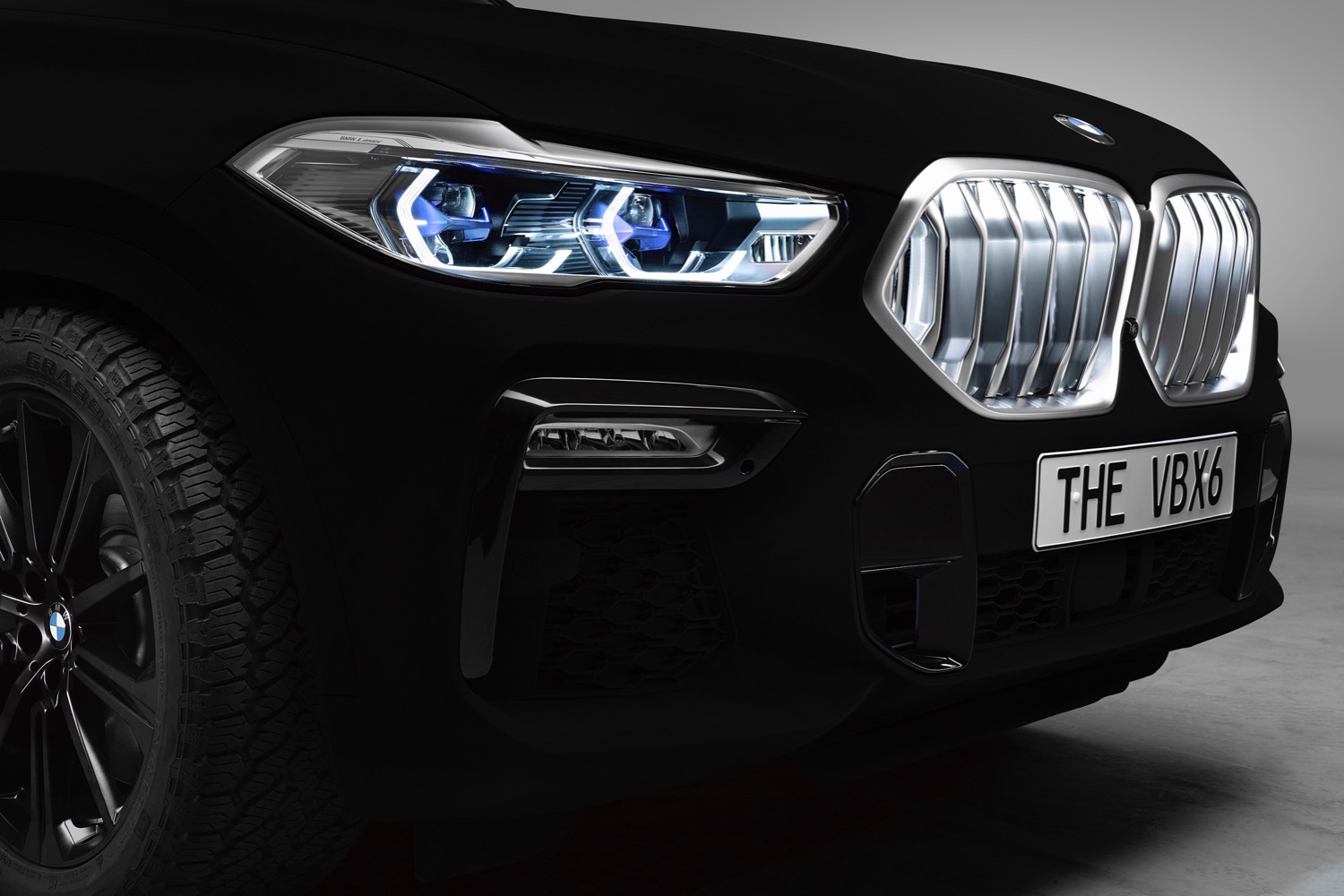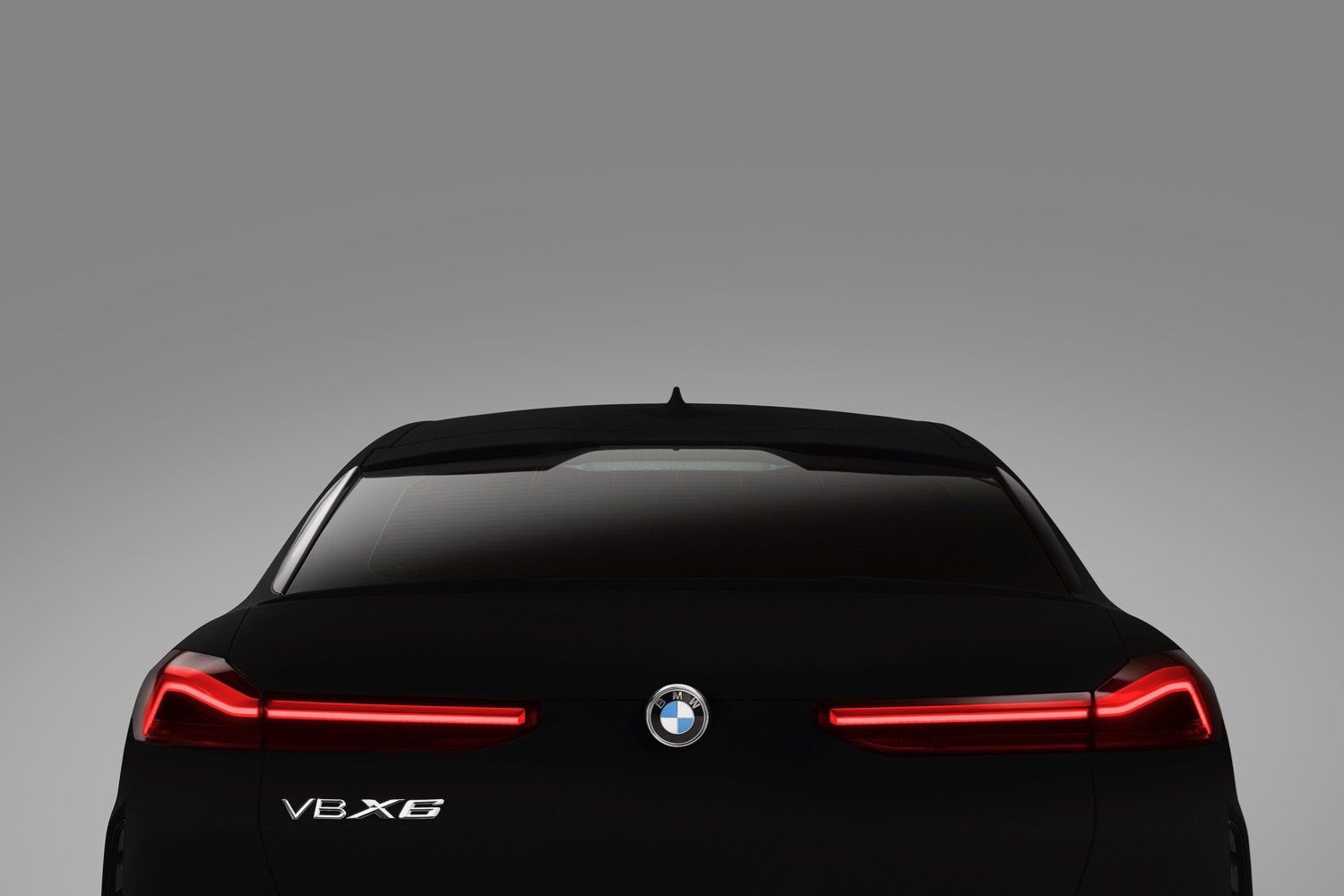At the 2019 Frankfurt Motor Show, BMW will show off its 2020 X6 SUV by painting it in the darkest substance in existence. Developed by England’s Surrey NanoSystems, Vantablack is a paint that absorbs up to 99.96% of visible light. the X6 is the first car to get a coat of it.
The “vanta” in “Vantablack” stands for “Vertically Aligned Nanotube Array.” It’s made from microscopic carbon nanotubes, which absorb nearly all of the light that hits them. Vantablack was originally developed for use in space telescopes and other optical equipment. Its low reflectively and ability to absorb stray light makes it easier for optics to detect faint light from distant stars. The X6 is coated in a slightly more reflective form of Vantablack, called VBx2. But the paint is still so dark that surfaces lose their three-dimensional appearance.
BMW added black wheels and heavily-tinted windows to match the Vantablack paint job, but it also kept the X6’s optional light-up grille to keep the SUV from completely disappearing into the shadows. Don’t expect Vantablack to be on the options list when the X6 goes on sale later this year, as the blacked-out X6 is a one-off show car.
“We received inquiries from most of the big-name automotive manufacturers, almost from the day we launched the original material in 2014, but we’d always said no,” Ben Jensen, Vantablack inventor and founder of Surrey NanoSystems, said in a statement. “When we were approached by BMW, we were still quite hesitant to begin with. But the new X6 looked so incredibly different that it just felt like a really good fit.”
Developing a version of Vantablack durable enough for everyday use would be a “huge technological challenge,” Jensen said. He added that Vantablack wouldn’t necessarily improve the look of all cars. The paint is so dark that it hides a lot of details, so it admittedly might not be everyone’s cup of tea.
However, he noted that Vantablack has another automotive application. The light-absorbing paint is used in “laser-based sensor equipment” for both driver-assist systems and self-driving cars, Jensen said. The paint eliminates stray sunlight, which can hinder the performance of these sensors, according to Jensen.
